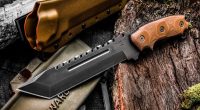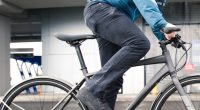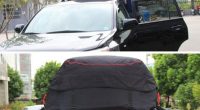What Makes Inversion Tables an Important Investment? (Various Models Explained)
Inverted decompression is the perfect type of stretch you need when you’ve been sitting down at your desk for a very long time. This can help relieve each joint and disk from the weight and pressure that’s built up throughout the day. This is not an invasive or by any means a painful solution. You are simply strapped onto an inversion table which provides a gentle way of targeting the pain source and relieving the tension and stress from it. Teeter’s inversion tables, for example, provide excellent spine realignment, relaxation for tense muscles and stress reduction.
Teeter EP 950
This model offers you three different inversion angles (20°, 40°, 60°) and it comes with a tether strap for easier angle adjustment. The height range of the EP 950 starts from 146 cm and goes up to 2 metres and has a weight capacity of 136kg while it weighs only 33kg. Unlike some Teeter inversion tables this unit has EZ-Stretch action handles and it also comes with Flex technology. This allows you to stretch further back which enhances the benefits from the inversion stretch. The EP 950 is UL certified and it comes 85% pre-assembled with DVD and online video support whilst you also get a more comfortable ratchet ankle lock system.
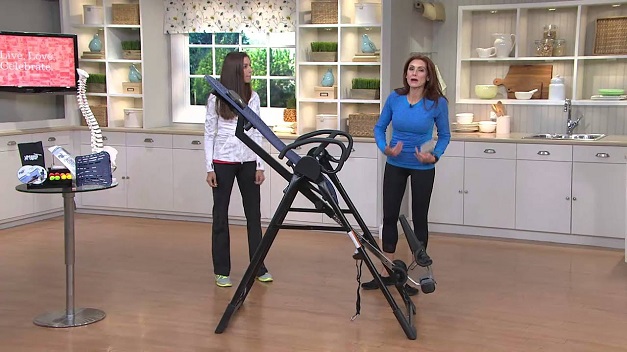
Teeter EP 960
The UL safety certification, the 20°, 40°, 60° Tether controlled degrees, DVD and online video support are all features that can be found on the EP 960. But other features like the ComforTrak bed, E-Z reach ankle system and the fact that this table is acupressure and lumbar bridge ready, makes it better than its predecessor. Like all Teeter inversion tables, with the ComforTrak bed, you can use the acupressure to apply healing pressure on supported spine muscles and enhance decompression and alignment in the lower back with the lumbar bridge.
Teeter FitSpine X3
The main feature of this table is the FlexTech Bed, an 8-point suspension system which flexes as you move providing a greater range of motion. Because of that, like the EP-960, the FitSpine X3 is also acupressure and lumbar bridge ready, but here you get the stretch max handles. These handles enhance the decompressive stretch since they are extra long and provide the necessary grip to assist you when inverted. The ankle lock handle system on this unit is coupled together with wrap-around ankle cups which help secure your ankles in a more comfortable way. This table comes with UL certification while it is also compatible with the TeeterLink App.
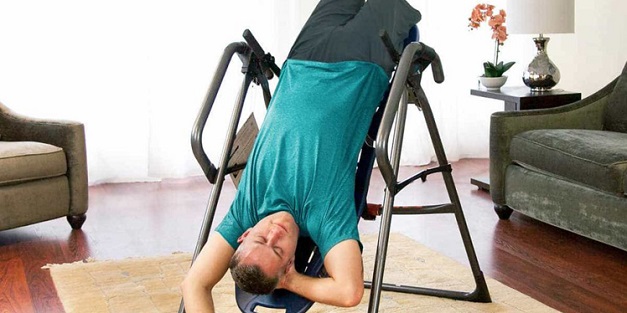
EP 970
Like with all inversion tables from Teeter, the lumbar bridge is there to help decompress and improve the alignment benefits of the table. With this unit, the lumbar bridge is also made to provide a place of support to help focus the traction of the lower back. The EP-970 comes with two different sizes of acupressure nodes which allow for a more versatile healing pressure. The Stretch Max handles on the EP 970 have embossed inversion angle guides and an extra-long grip surface which are designed to help guide new users.
EP 560
Apart from being UL certified, featuring Teeter’s ergo-embrace ankle cups and being compatible with the acupressure nodes, this table can also fit people that are up to 1.85m tall. The EP 560 is also rated at a 136kg weight capacity thanks to its heavy-gauge steel parts which come patented with auto-locking hinges. Like most inversion tables mentioned so far, the EP 560 also comes with DVD and online video support and it features the EZ angle tether which easily controls the degree of rotation when inverting.
Contour L5
What makes this table different from all other Teeter inversion tables is the one-click balance feature which helps accommodate users of different sizes and shapes without having to remove the bed from the frame. This unit also comes with a decompression arch which allows for deeper decompression when placed behind the back or neck. The sleek frame design makes it easy to mount and dismount the table and the smooth, durable and easy to clean bed surface reduces friction and helps optimise decompression.
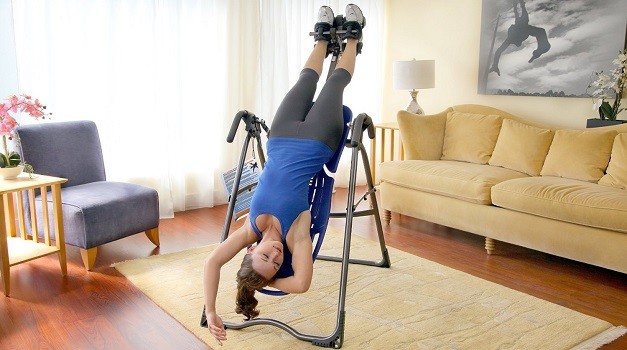
How to Use
Setting up Teeter inversion tables requires you to have at least 1.2 metres of free space around them. Once you have your table placed, the first thing you need to do is adjust the height so your head can rest comfortably on the bed and not hang over it. The level of ankle protection depends on the degree of inversion you’ll be doing. If you are doing full inversion keep it a bit on the tight side but don’t go overboard and if you are doing 45° or 60° inversions you can make things looser.
With a Teeter hang-ups table, you have a feature that allows you to adjust responsiveness which helps you recover from a 90° angle more easily. If you are below 100kg and have experience with inversion tables, then go with highest level of responsiveness. For beginners, it is recommended that you start with the least amount of responsiveness.
A session should last between 1 to 2 minutes when starting out and you can advance in a way you feel comfortable, but remember the number of inversions you make is more important than the duration. You can work your way up between 3 to 5 minutes per session or basically as long as it is needed for your muscles to relax.
Always take your time and listen to your body as there is no predetermined time limit for using inversion tables. For best results, you should use an inversion table several times a day, especially in the morning and evening as it will help you wake up or relax more easily. You can also include inversion into your fitness routine or you can only use it to relieve back pain and tension.

